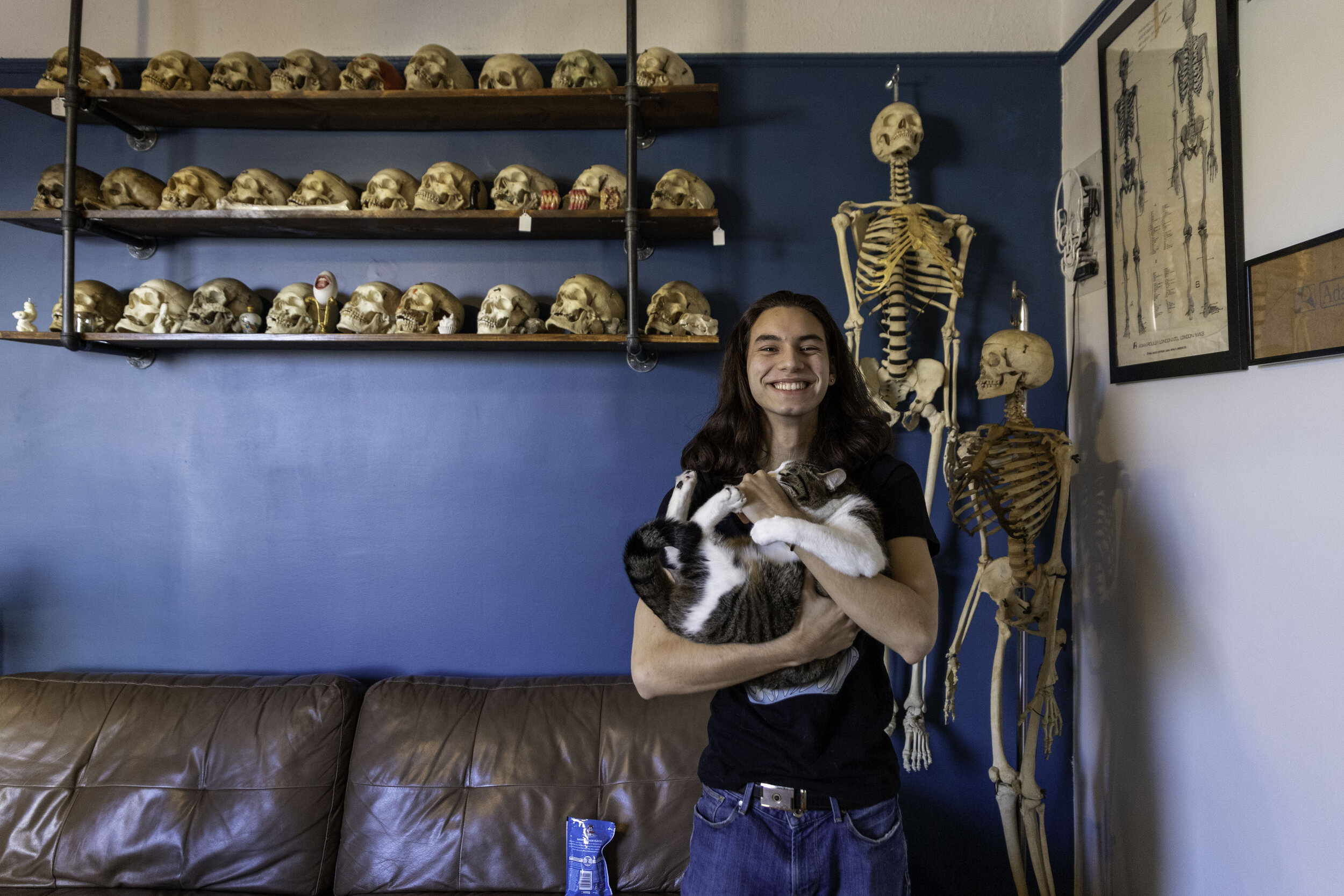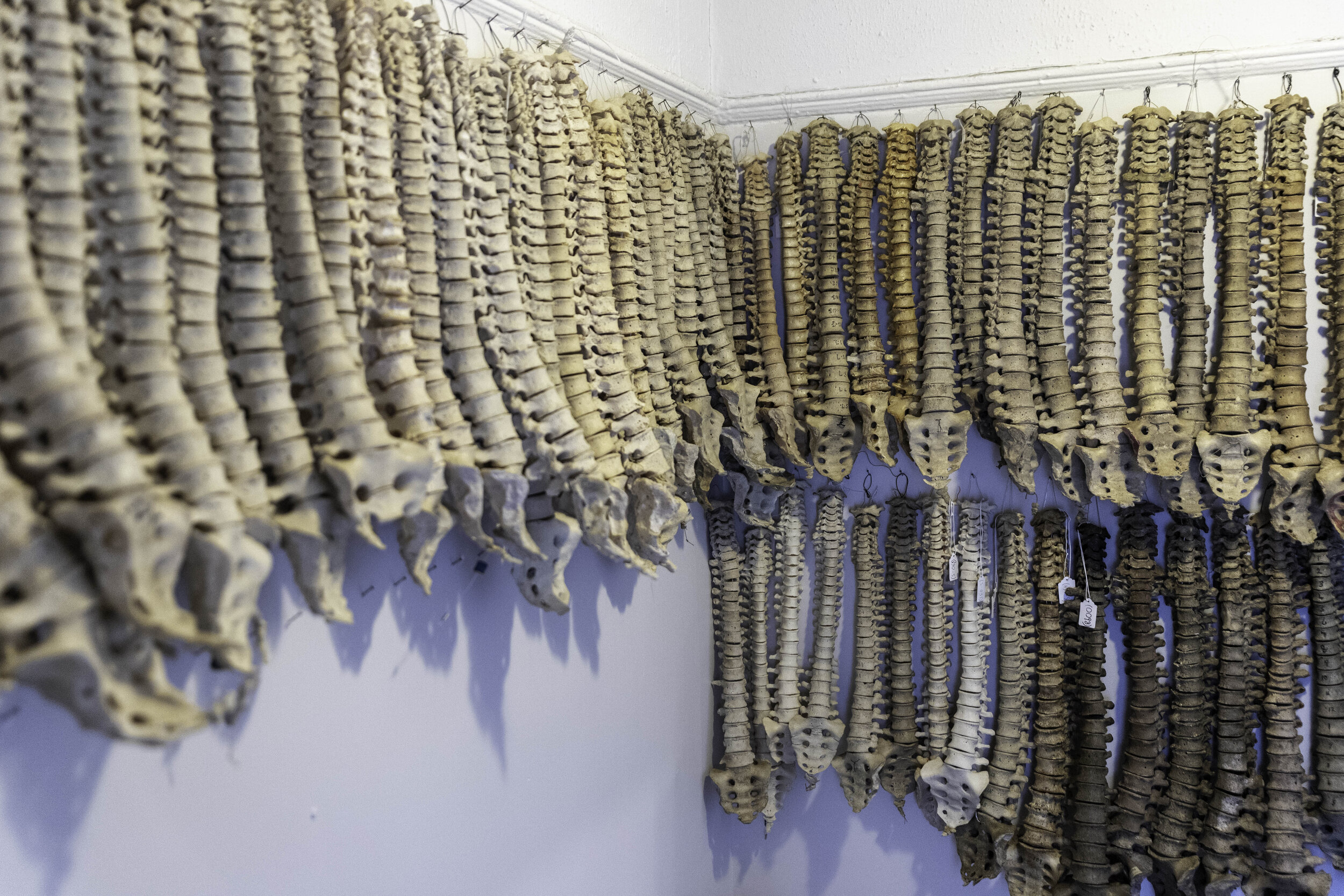One question I frequently am asked about my collection of human spines is “Why?”
There are many reasons I have almost 100 spines in my showroom, and they range from the petty, the personal, the scientific, and the artistic.
When I was in highschool in south-bend Indiana, I was a cheerleader. My cheer coach was also my health teacher, and therefore had a plastic model of a human spine on her desk, where I spent many afternoons waiting for practice to start. I spent years being fascinated by it, not as a morbid object, but as an example of natural design. The way that all of the body is connected to the spine, how it is the most integral part of the body. Finally I begged her for the opportunity to hold it for closer inspection. She refused, telling me that it was too expensive and that if I broke it, the school would not be able to afford another one.
I went home that night and started researching where I could get my own, and found that real ones were available for sale. No plastic models for me! Thus began my obsession and eventually my collection. What started as a petty vendetta against my coach began a deep preoccupation with spines as a visual object and teaching tool.

On a personal level, I came to view the spine as a symbol of structure, stability, and moral fortitude. After the death of my father, I started to associate the spine with being the man of the house, “having a backbone” and standing up for what I believe in. I identified with this so much that I got an illustration of one by Sara Suppan on the bottom right side of my back.
Professionally, I entered this industry as a collector. I noticed that other collectors typically fall into 3 categories: those who seek the rarest items, those who seek items in the most pristine condition, and those who collect in large quantities. I think there will always be a rarer piece, and only collecting the most perfect examples leaves out the possibility of learning from variation. I also often saw sellers break up spines down to their individual vertebrae for profit, and while I do not condemn that practice, I personally do not care to do that. Once a spine is separated, it is nearly impossible for them to ever be reunited. A complete spine has information that is invaluable to designers like me, anthropologists, medical students, and many others.

What started as a personal fascination grew into a desire to document and preserve these pieces for future generations. While I am the current caretaker of these pieces, it is my ultimate goal to donate my spine collection to a museum that will allow others to learn from them as much as I have.


.jpg)



